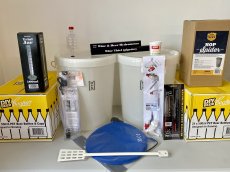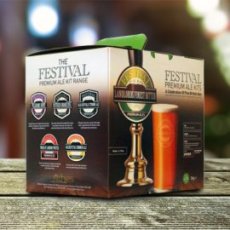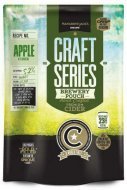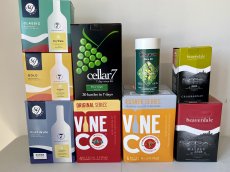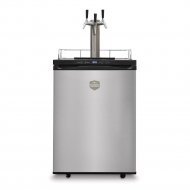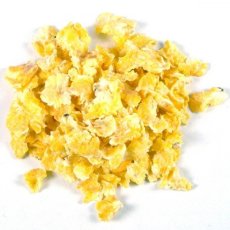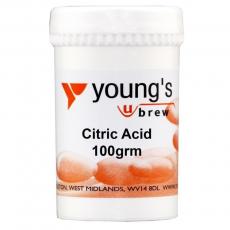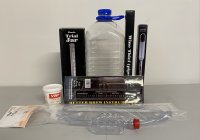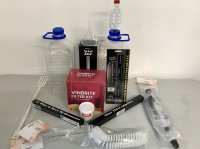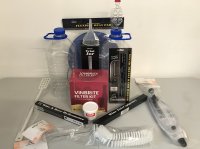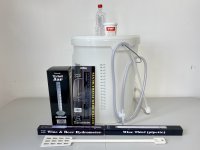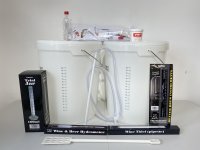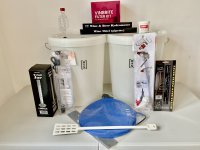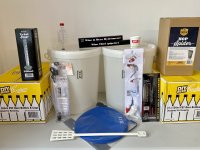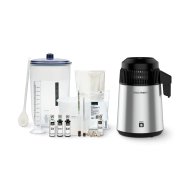Home Brew Starter Kit instructions by Brew Mart.
Instructions for Beer/Cider starter kits
Welcome to your first foray into the world of brewing. We hope you enjoy it. The following are general instructions that apply to all beer and cider kits. The kit you have purchased will have instructions specific to that kit. (e.g. temperature range for fermentation and specific gravity targets.) Follow these instructions as closely as possible, paying particular attention to the sterilisation of your equipment and maintaining your fermentation temperature in the required range.
Brew Mart Starter Kits
Still Spirits Air Still Mini Distillery Kit also known as Air Still Essentials Kit (UK)
- Sterilisation. All equipment coming into contact with the brew must be sterile to prevent contamination. Start by washing everything with hot water and a sponge. Never use a scourer. Scourers will scratch the plastic, and the scratches can harbour bacteria. Rinse with cold water and drain dry, if not sterilising immediately. Do not use a tea towel.
- Following the instructions on the steriliser tub, make about 10 litres (2 gal) sterilising solution in the fermenting bucket. Swill the solution round to cover all internal surfaces, including the lid, then add the hydrometer, airlock and paddle. Leave for approximately 20 minutes and then rinse everything thoroughly.
- Whilst waiting, remove any labels and open the can from your kit. Stand the can in a pan of very hot water to soften the malt or fruit extract, making it easier to pour later.
- Your kit will have instructions on what to do next, so follow those now. They will involve pouring the malt/fruit extract into your fermenter, any extra sugar, and a mixture of boiling and cold water mixture.
- Once you have a full fermenter, you can float the hydrometer and record the original gravity reading. Original Gravity (OG) should be somewhere in the region of 1035-1050. As the yeast ferments the sugars to produce alcohol, the hydrometer reading will drop steadily over the next few days.
- We recommend that the yeast sachet be sprinkled onto the liquid’s surface (wort) and left to rehydrate. You can stir after a few minutes, however, I have had more success by not stirring than by stirring. With some kits, you can add the hops and finings at this point too.
- Now move the bucket to a warm place; The kit instructions will specify the temperature requirements to maintain a healthy fermentation. Firmly clip on the lid, and place the airlock, half-filled with water, in the hole in the lid. The airlock allows the CO2 produced by fermentation to escape. We suggest that you don’t stand it on your best carpet; the initial fermentation can be quite vigorous, and the froth can escape out of the airlock or down the side of the bucket.
- As soon as fermentation begins, alcohol is in production, although it will take a few days to produce something drinkable. Just allow the yeast to do its job, and all should be well.
- When the gravity reading on the hydrometer is at the target stated in the kit instructions, usually around 1010, or when the froth has subsided, and no activity is evident on the surface of the beer, the primary fermentation has finished.
- The beer or cider is now ready to be transferred into either bottles or barrels for “secondary fermentation” or “conditioning”. At this stage, follow your kit instructions again, as these will have details of the extra sugar amounts required for the secondary fermentation process.
- You will be using your sterilised and rinsed siphon tube to transfer the beer to sterilised bottles or a barrel. Remember to sterilise and rinse the bottle caps as well. If using a barrel, lightly cover both sides of the rubber seal with petroleum jelly to ensure an air-tight seal.
- Place the barrel or bottles in a warm place. Your kit instructions will specify the temperature range, but it is usually 20-24C, and leave to condition according to the kit instructions.
- Once the secondary fermentation process has finished, you will need to transfer your beer to a cool place to let it settle. The beer should pour with a head and some sparkle at this stage but may not be completely clear. Don’t worry; the haze is harmless and should settle out with time. Your beer will continue to improve for several weeks if it gets a chance.
We hope that you enjoy the fruits of your labour, but if you have any problems, you may find the answer on our hints and tips page, if not, please phone us for advice (remember we are closed on Wednesdays).
If you would like to learn more about brewing beer, we recommend “Home Brewing” by John Parkes or if you prefer cider, then read “real cider making on a small scale” by M. Pooley and J. Lomax. Both books are available from Brewmart, or you could try another of our wide selection of inexpensive beer and cider kits.
Cheers!
Brew Mart.

